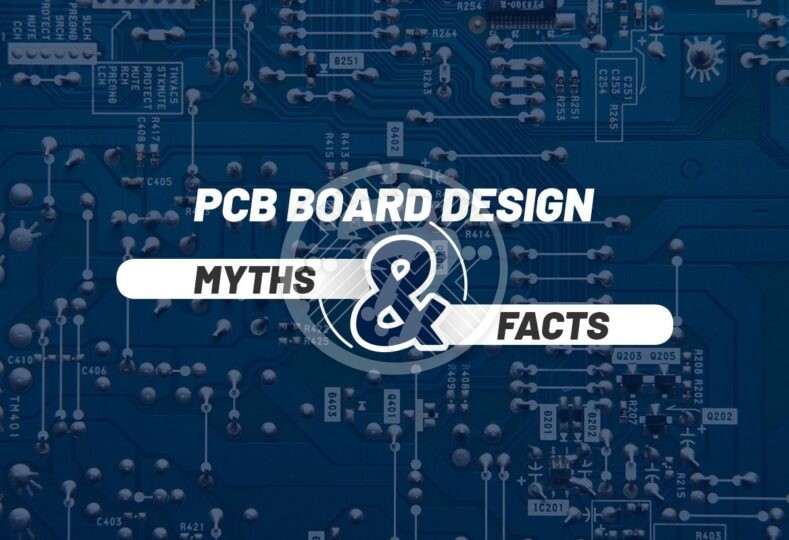The most common myths & facts about PCB board design!

While PCB board design plays an extremely important role, the fact also remains that there are several myths associated with printed circuit board design. Holding on to these misconceptions can lead not just to higher overall production costs but also defective boards. It will be worthwhile to look at some common myths about PCB board design.
Here is a list of the most common misconceptions about PCB board design that need to be debunked:
Design Rules are common for rigid and flexible circuits board
Far from it! There are a number of things that need to be kept in mind depending upon whether you are designing for a rigid or a flexible circuit. Some of the things to be kept in mind include:
- Flexible circuits need to take into account locational stresses as they need to be folded and bent
- The design also needs to pay heed to the dimensional stability of the base materials
Component placement does not make a difference
Contrary to popular thinking, circuit performance has a lot to do with careful placement of parts. Placing parts just about anywhere on the board or even grouping similar parts together to save space, does not work. You need to consider a wide variety of factors including but not limited to heat and electrical overload. You also need to consider the height, width and size of components. Every component needs to sit in the right location. Quality PCB assembly also needs to make sure that the PCB doesn’t overheat and isn’t too high on power consumption.
The use of via in pad is not conducive to the circuit board
You certainly need to be careful when using via in pad as plating chemicals can get trapped if you don’t cap or mask it. However, that does not mean that the via in pad should be totally avoided. In fact via in pad have a number of uses, including but not limited to:
- They work well when you need to place close bypass caps
- They help in thermal management and grounding
- They assist in pitch BGA routing
90 degree angles are to be avoided
This is true only when PCBs were etched with acid as the sharp corners would mean acid would collect there. With etching now being done with alkaline, acid traps aren’t an issue any more. 90 degree angles therefore are no longer to be avoided.
Design is all
While it is natural to want your design to be as elegant as possible, the fact remains that other than the design you need to take into account a wide variety of factors. These include:
- The material available
- The tools used, and more
While on paper you can have any track width, spacing, annular rig size and more, the final product needs to take into account the real world limitations. A lovely design on paper may not therefore turn out to be effective in the real world. The design, therefore, needs to take into account real world limitations. If this is done correctly, you will not have costly mistakes to contend with at a later date that will cost you time and money and impact your go-to-market.
The design software is inconsequential
The normal tendency is to go with a PCB design software that comes cheap. Nothing wrong there as cost-effectiveness of the software impacts your total project cost. However, choosing the right PCB board design software involves a number of factors other than cost alone. Some of these factors include:
- Type, quality and quantity of content
- Availability of community support
- Integration of supply chain
- MCAD integration
- Management of library components, and more
In fact you need to closely evaluate issues like the kind of user interface required, the kind of pricing and more to come to a balanced decision.
With these myths debunked, it is that much easier to pay due attention to aspects that will add to efficiency of design of your PCBs. What this in turn means is the rise of new innovations and a general betterment in the quality of life.
We have over 4 decades of experience in providing innovative high-speed PCB design & manufacturing services. We take an extra step to reach out to your exact PCB manufacturing requirements, high-quality standards, and a strong customer support service to provide quick turnarounds & on-time delivery to our customers. Submit your any custom PCB board design service requirements via PCB design quote form along with BOM (Bill of Material) and Gerber files and we will get back to you soon. Alternatively, you can email your requirements at sales@technotronix.us or call us at 714/630-9200.






